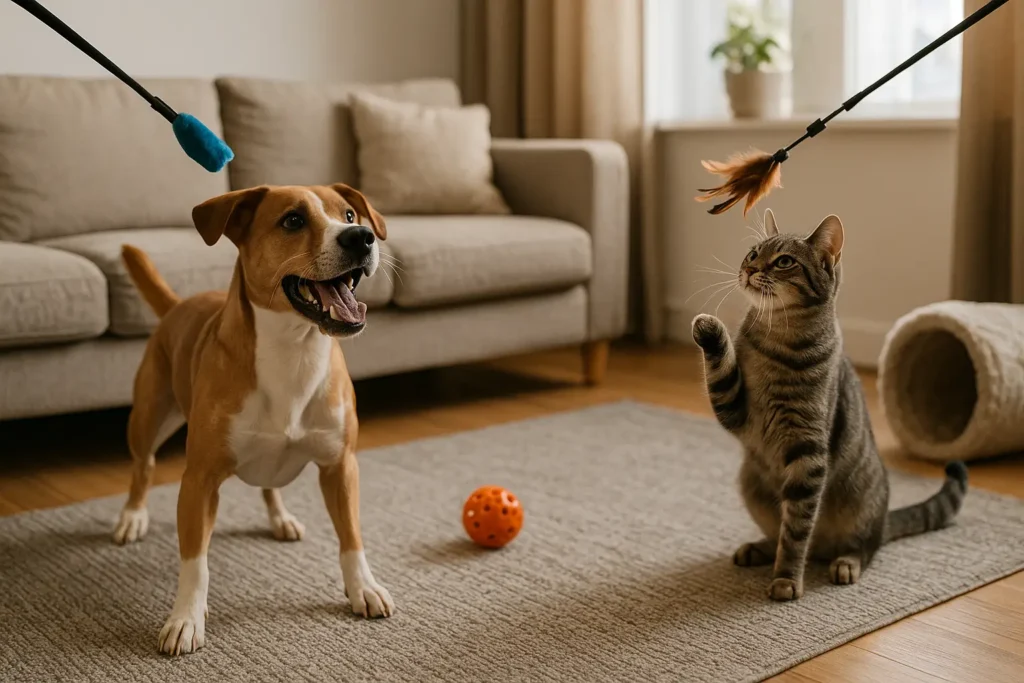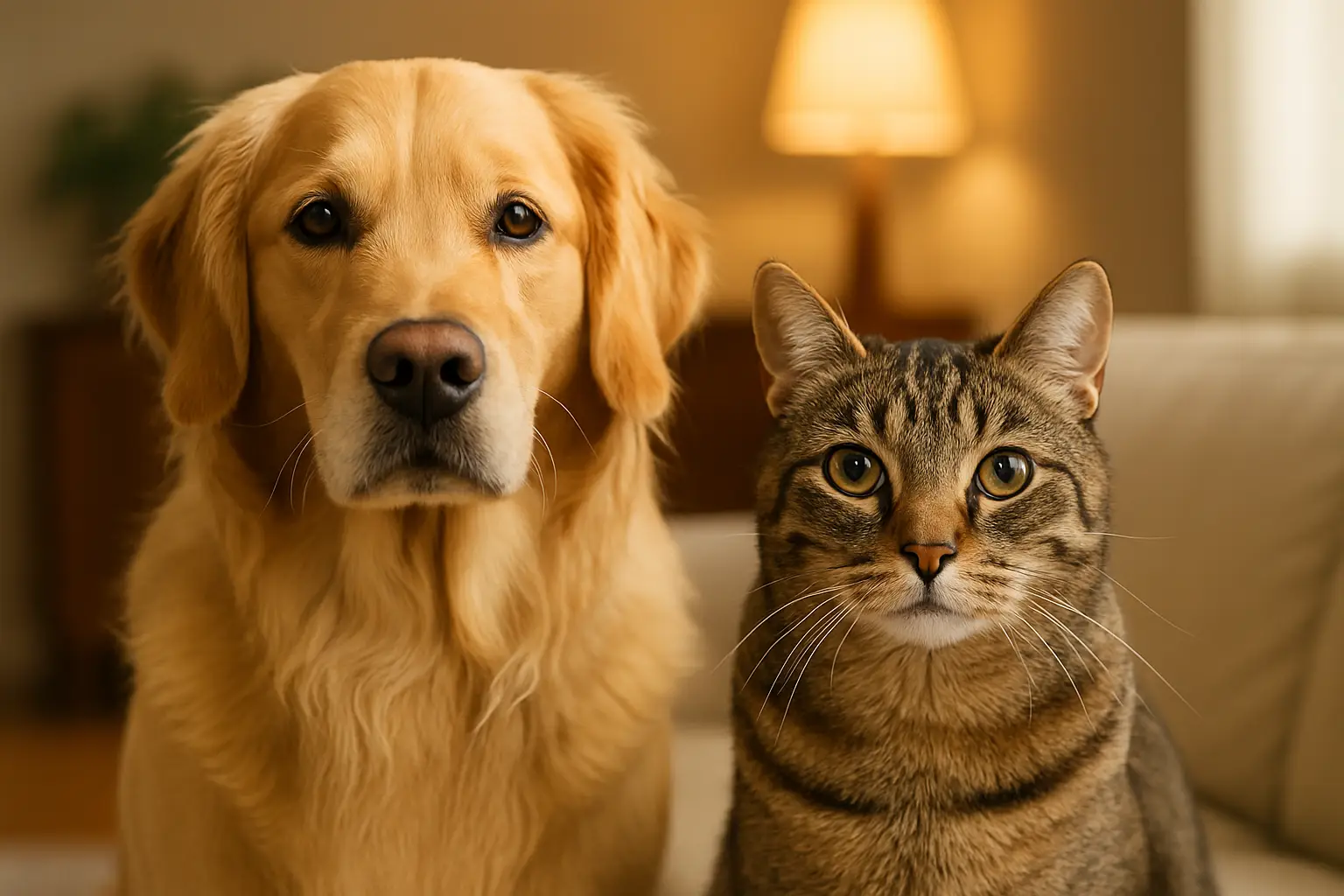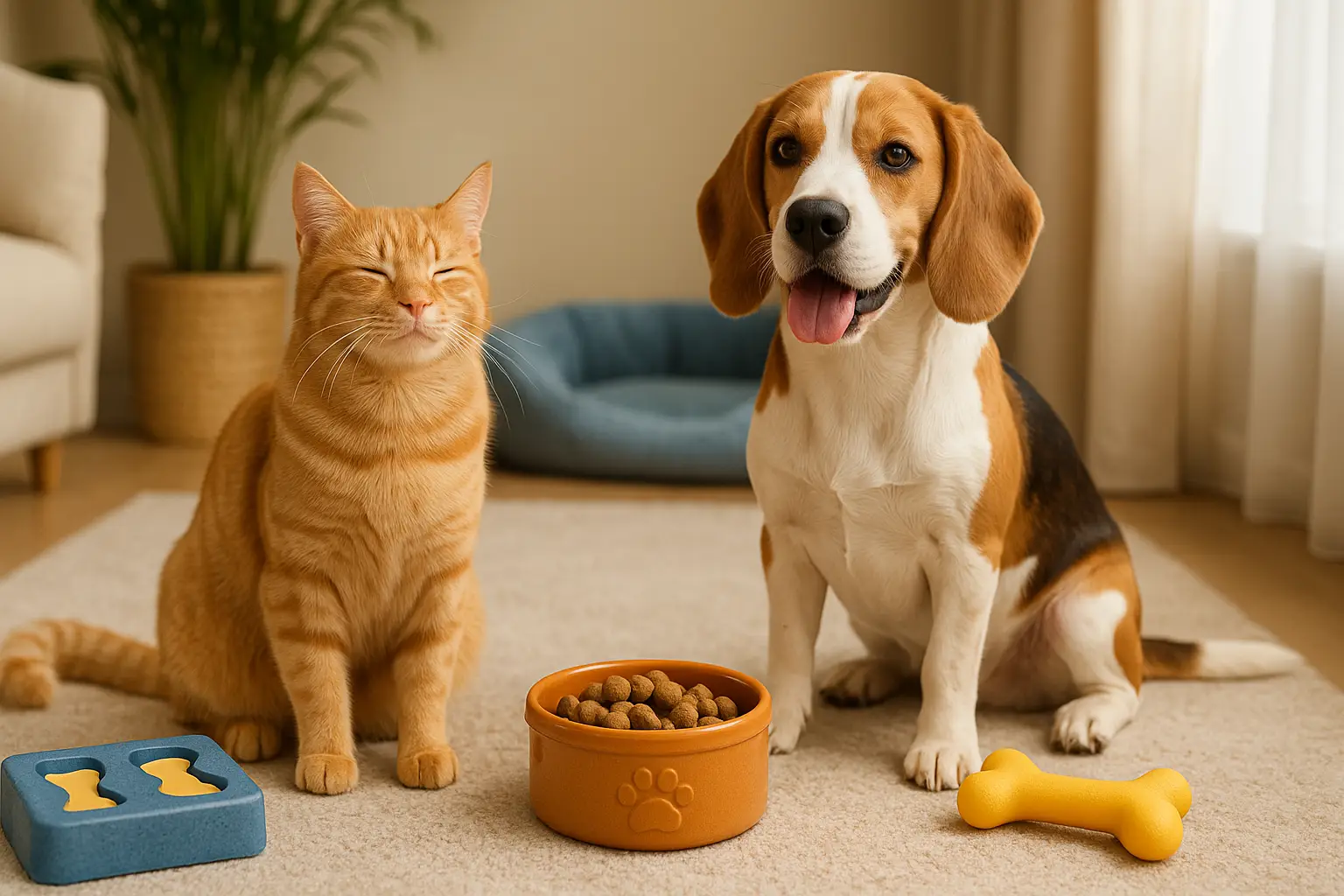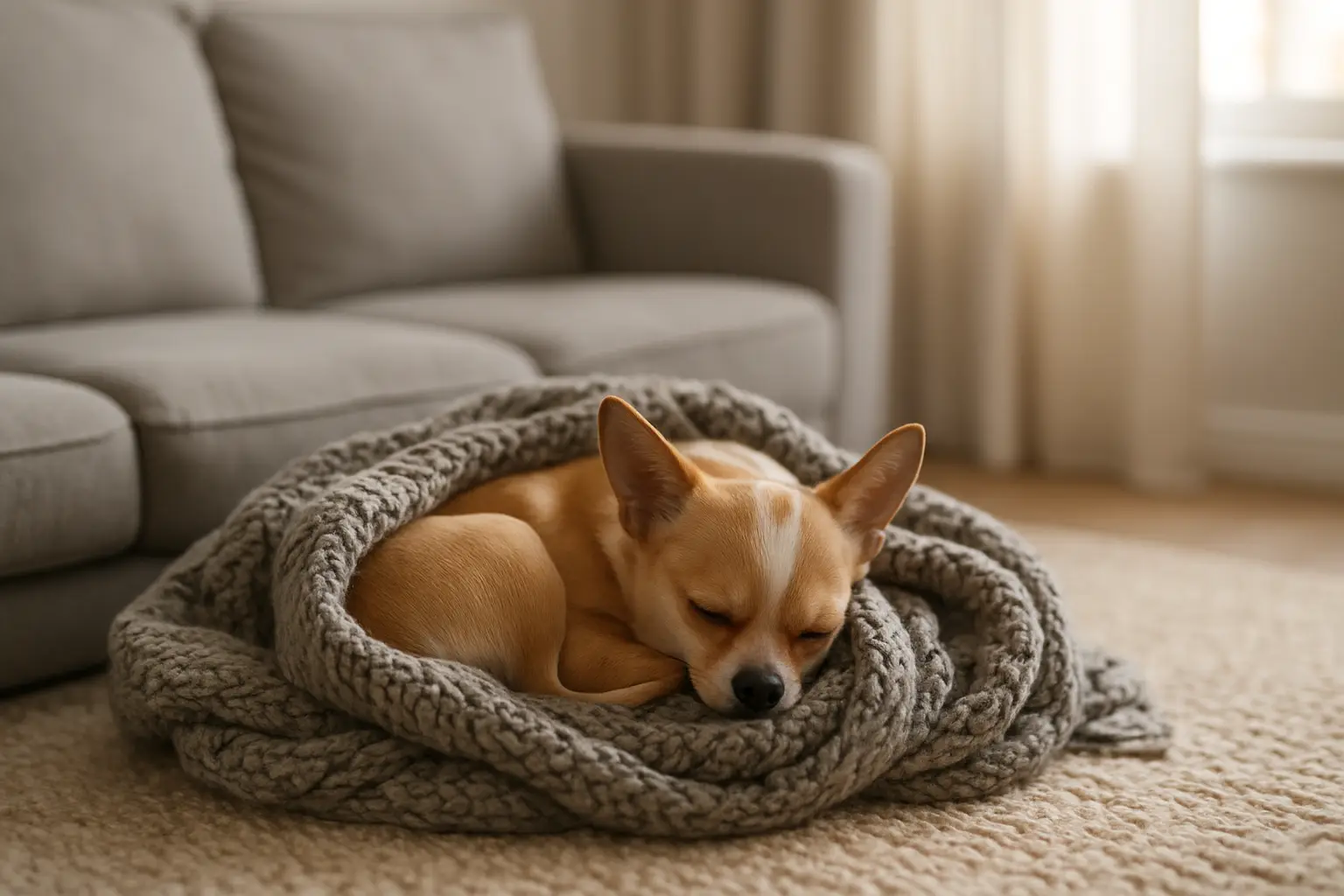How to Help Your Pet Stay Active Indoors
Whether you’re stuck inside due to bad weather, limited space, or a demanding work schedule, helping your pet stay active indoors is essential. Dogs and cats need more than food, water, and cuddles—they need structured physical activity and mental stimulation to thrive.
In this guide, we’ll explore over 15 indoor activities for pets that support physical health, reduce stress, prevent behavioral problems, and strengthen your bond. Whether you have a high-energy dog, a curious cat, or a senior pet that prefers gentle movement, this comprehensive resource will help you build a home life that’s full of motion, even in limited space.

Why Indoor Activity Is Vital for Your Pet
Just like people, pets can develop physical and emotional issues when they’re inactive. While some breeds or individual pets are naturally calmer, every dog and cat needs at least a moderate level of daily movement.
What Can Happen Without Activity:
- Weight gain and obesity
- Muscle atrophy or joint stiffness
- Anxiety and destructive behavior
- Sleep disruption
- Lack of engagement or connection with humans
Indoor exercise isn’t just about “tiring them out”—it’s about keeping them healthy and emotionally balanced.
Know Your Pet’s Energy Profile
Understanding your pet’s unique activity level helps you offer the right type and amount of movement.
Dogs:
- High-energy breeds (Border Collie, Jack Russell, Husky): Require frequent, intense exercise.
- Moderate breeds (Golden Retriever, Beagle, Poodle): Benefit from consistent play with a balance of rest.
- Low-energy breeds (Bulldog, Basset Hound): Need shorter but regular movement.
- Senior dogs: Thrive on gentle stretching, slow walks, and calm play.
Cats:
- Young/adult cats: Require daily mental and physical stimulation, even indoors.
- Senior cats: Prefer slower-paced play with soft toys or gentle climbing opportunities.
Tailor your activities based on your pet’s breed, age, and behavior cues.
1. Create a Pet Activity Zone
Designate a safe, open area in your home for active time. Even in small apartments, a living room corner or hallway can become a playground.
Tips:
- Move furniture temporarily to open space
- Use foam flooring or area rugs for better grip
- Keep toys easily accessible in a small basket or bin
2. Use Puzzle Toys and Food Games
Mental stimulation is as tiring as physical movement—and puzzle toys combine both.
Great options:
- Treat-dispensing balls or cubes
- Snuffle mats (encourage natural foraging behavior)
- DIY muffin tin games (hide treats under tennis balls)
These activities challenge your pet to “work” for food, slowing down eating and promoting critical thinking.
3. Practice Basic Training and Commands
Training isn’t just for puppies—it’s a lifelong engagement tool.
Try daily 5–10 minute sessions:
- Sit, stay, down, shake, rollover (dogs)
- Touch, jump, spin, come (cats with clicker training)
Reward with praise or small treats. Use this time to teach fun tricks like “crawl” or “find it.”
4. Play Hide and Seek
This simple indoor game gets your dog or cat moving and thinking.
How to play:
- Hide behind furniture and call your pet
- Reward them with treats or a favorite toy when they find you
- Gradually make the hiding spots harder
You can also hide toys or treats around the room to create a scent-based hunt.
5. Try Tug-of-War or Gentle Wrestling
For dogs especially, tug-of-war is a great way to release energy.
Choose:
- Rope toys or rubber tugs
- Play in short bursts and practice letting go on command
- Always supervise for safety
Gentle indoor wrestling also engages physical play while reinforcing boundaries.
6. Set Up a DIY Obstacle Course
Use what you have at home:
- Couch cushions = jump pads
- Chairs = weave poles
- Cardboard boxes = tunnels
Encourage your dog or cat to follow a treat or toy through the “course.” You can even time it for fun.
7. Schedule Stair Climbing (If Available)
If you live in a house or building with stairs:
- Toss toys or treats up a few steps to encourage climbing
- Let your pet walk up and down under supervision
- Avoid this for senior pets or those with joint issues
8. Engage in Interactive Toy Time
Some toys are made for solo play, while others should be used together.
For Dogs:
- Squeaky toys
- Ball launchers (short-range indoor)
- Rope toys
For Cats:
- Wand toys (simulate prey)
- Laser pointers (finish with a tangible toy to catch)
- Electronic mice or flopping fish toys
Rotate toys weekly to maintain novelty.
9. Teach “Find It” or “Which Hand” Games
These scent-driven games work especially well indoors.
Find It:
- Show your pet a treat
- Let them watch you hide it under a blanket or cup
- Release them to “find it!”
Which Hand:
- Place a treat in one hand
- Close both and let your pet sniff and choose
These games are great for mental stimulation.
10. Set Up a Window Watching Station
For cats, birds and cars provide hours of entertainment. For dogs, watching the neighborhood is a calming activity.
- Place a bed or platform near a window
- Use a perch, tower, or couch
- Keep it clutter-free to prevent accidents
Add a bird feeder outside the window for extra fun.
11. Build Vertical Space for Cats
Cats love to climb and observe their territory.
- Install wall-mounted shelves
- Provide cat trees with multiple levels
- Use hammocks, towers, or hanging baskets
This encourages exploration and satisfies their need for elevation.
12. Dance or Move Together
If you enjoy music, invite your pet into the rhythm.
- Turn on a song and toss a toy
- Encourage movement with your hands or a treat
- Try walking in place or side-stepping with your dog
This creates joyful engagement and boosts your energy too.
13. Rotate Indoor “Adventure Areas”
Move play stations around weekly.
- Switch beds, boxes, or toys to new spots
- Hide surprises in different corners
- Use scents to spark interest (pet-safe essential oils, herbs, or food)
This tricks your pet’s brain into thinking the environment is new again.
14. Use Clicker Training and Reward Markers
Clickers or verbal markers (“yes!”) can be used for both dogs and cats.
Train:
- Touch a target
- Ring a bell
- Jump onto or off a surface
- Sit in a box
Use sessions as part of your daily routine to reinforce good behavior while offering activity.
15. Use Pet Treadmills (Optional)
Some dogs do well with a treadmill when outdoor walks aren’t possible.
- Start slow, reward progress
- Never force them or leave unsupervised
- Use low speeds with verbal cues
This is best for high-energy breeds under professional guidance.
16. Gentle Stretching or Massage (For Seniors)
If your dog or cat is older or recovering from inactivity, keep joints mobile with gentle movement.
- Use slow stretches
- Massage sore areas with circular motion
- Encourage low-impact mobility on rugs or foam flooring
This increases blood flow and comfort while reducing stiffness.
How to Build an Indoor Pet Routine
Consistency is key.
Sample Routine:
| Time | Activity |
|---|---|
| 7:30 AM | Breakfast and short play session |
| 9:00 AM | Training or puzzle toy |
| 12:00 PM | Short tug-of-war or scent game |
| 3:00 PM | Rest with chew toy or window watch |
| 6:00 PM | Obstacle course or hide-and-seek |
| 9:00 PM | Wand toy play or cuddle/stretch |
Even small bursts of 10–15 minutes can keep your pet stimulated and balanced.
Final Thoughts: Movement Is Enrichment
You don’t need a backyard or a dog park to give your pet the activity they deserve. With creativity, structure, and patience, your home can become a playground full of excitement, challenges, and bonding.
By incorporating these indoor activities for pets into your routine, you’re showing your dog or cat that their physical and mental needs matter—and that’s one of the greatest gifts a pet parent can give.




Post Comment